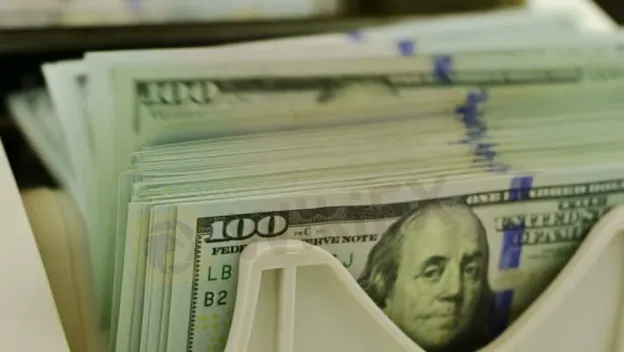简体中文
繁體中文
English
Pусский
日本語
ภาษาไทย
Tiếng Việt
Bahasa Indonesia
Español
हिन्दी
Filippiiniläinen
Français
Deutsch
Português
Türkçe
한국어
العربية
Currency traders get set for an interest rate rise as US dollar hangs on
Abstract:Changes in the federal funds rate can impact the U.S. dollar. When the Federal Reserve increases the federal funds rate, it typically increases interest rates throughout the economy. The higher yields attract investment capital from investors abroad seeking higher returns on bonds and interest-rate product.

Changes in the federal funds rate can impact the U.S. dollar. When the Federal Reserve increases the federal funds rate, it typically increases interest rates throughout the economy. The higher yields attract investment capital from investors abroad seeking higher returns on bonds and interest-rate product.
Trader's mind tends to concentrate on the interest rates increase which they suspect to be as a result of the recent meeting held in January for US Federal Reserves and also based on their expectations it will hold several rate rises.
But for the moment, analysts were surprised with a shocking benchmark cut by a Chinese.
As the traders measure the global policy views and also looking forward to Chinese economic data, which they expect later, but as the results of the Japans policy meeting which was revealed later showed inflation data from Britain on the next Day after the meeting and also the Australian jobs data was released later. While early in London trading sessions, the greenback was trading 0.2% higher at 114.45 yen, or approximately 0.8% above a Friday low. It also gained 100 basis points against the euro to $1.1403.
As the consequences of dollar's bounce and U.S. yield decisions on Friday, the support for greenback from hawkish rates review was underscored, even as momentum for gains starts to disappear. As of Monday last week, the U.S. dollar index in London was around 95.2-points, having declined sharply last Friday. The dollar strength‘s interest rate driver may not be completely buried after Friday’s move.
Professional and experts in crypto have observed an increase in hawkish statements at every Fed meeting since June of last year, but it may not necessarily bring new dollar highs. Also Rates are not expected to change
during the Fed meeting on Jan. 25-26, but there is a growing drumbeat of hawkish comments coming from both within and outside the central bank.
In accordance to J.P. Morgan CEO Jamie Dimon, six to seven rate rises are possible this year, and billionaire hedge fund manager, Bill Ackman floated the possibility of an initial 50 basis point hike on Twitter over the weekend.
Some Global investors sold their investments denominated in their local currencies in exchange for U.S. dollar-denominated investments. The result is a stronger exchange rate in favor of the U.S. dollar. Treasury futures and Fed funds futures both fell as the cash market was closed for a holiday on Monday, reflecting a strong market belief of at least four rate hikes in 2022.

Disclaimer:
The views in this article only represent the author's personal views, and do not constitute investment advice on this platform. This platform does not guarantee the accuracy, completeness and timeliness of the information in the article, and will not be liable for any loss caused by the use of or reliance on the information in the article.
Read more

What Euro Investors Can't Afford to Miss
For euro investors, geopolitical factors, inflation data, and the European Central Bank's policy direction will determine the market trends over the next few months.

How Big is the Impact of the USD-JPY Rate Gap on the Yen?
The U.S. Federal Reserve's repeated rate cuts and the narrowing of the U.S.-Japan interest rate differential are now in sight. So, why is the U.S.-Japan interest rate differential so important for the yen’s safe-haven appeal, especially when global economic uncertainty rises?

Has the Yen Lost Its Safe-Haven Status?
The Japanese yen failed to create a miracle in 2024, continuing its four-year decline against the US dollar. Does the yen still retain its safe-haven properties? Will the interest rate differential between the US and Japan narrow?

New Year, New Surge: Will Oil Prices Keep Rising?
As of the writing of this article (January 2), oil prices stand at $71.88 per barrel. Investors need to continue monitoring whether the supply and demand dynamics will continue to push prices further up.
WikiFX Broker
Latest News
Will Gold Break $2,625 Amid Fed Caution and Geopolitical Risks?
ECB Targets 2% Inflation as Medium-Term Goal
New Year, New Surge: Will Oil Prices Keep Rising?
PH SEC Issues Crypto Guidelines for Crypto-Asset Service Providers
FTX Chapter 11 Restructuring Plan Activated: $16 Billion to Be Distributed
Bithumb CEO Jailed and Fined Over Bribery Scheme in Token Listing Process
WikiFX Review: Something You Need to Know About Saxo
Is PGM Broker Reliable? Full Review
Terraform Labs Co-founder Do Kwon Extradited to the U.S. to Face Fraud Charges
Has the Yen Lost Its Safe-Haven Status?
Currency Calculator






